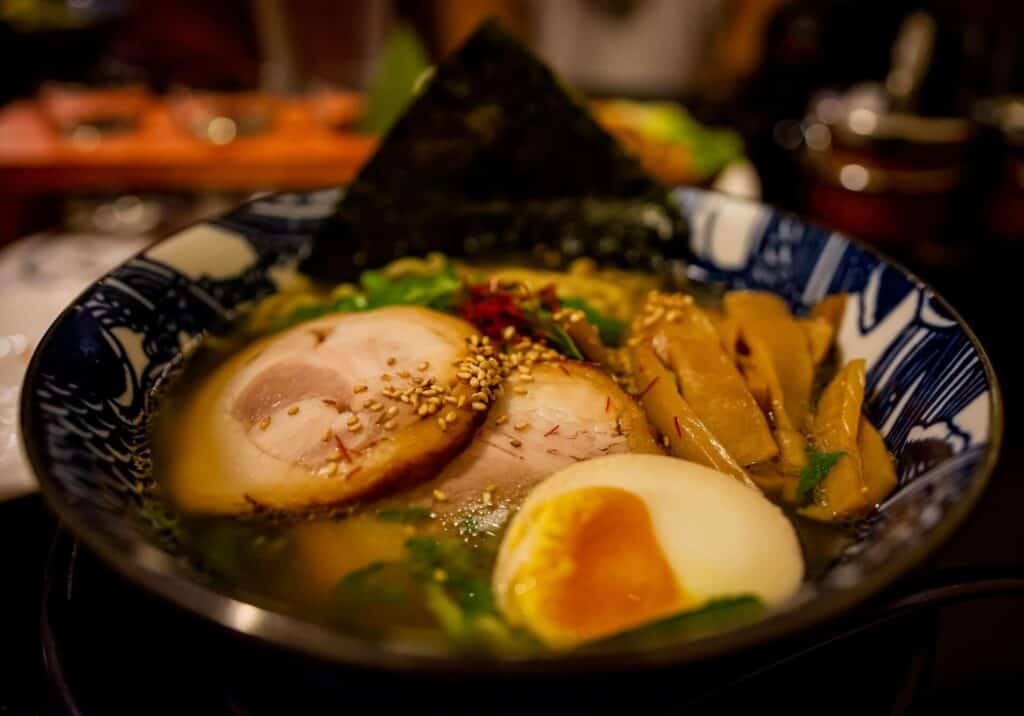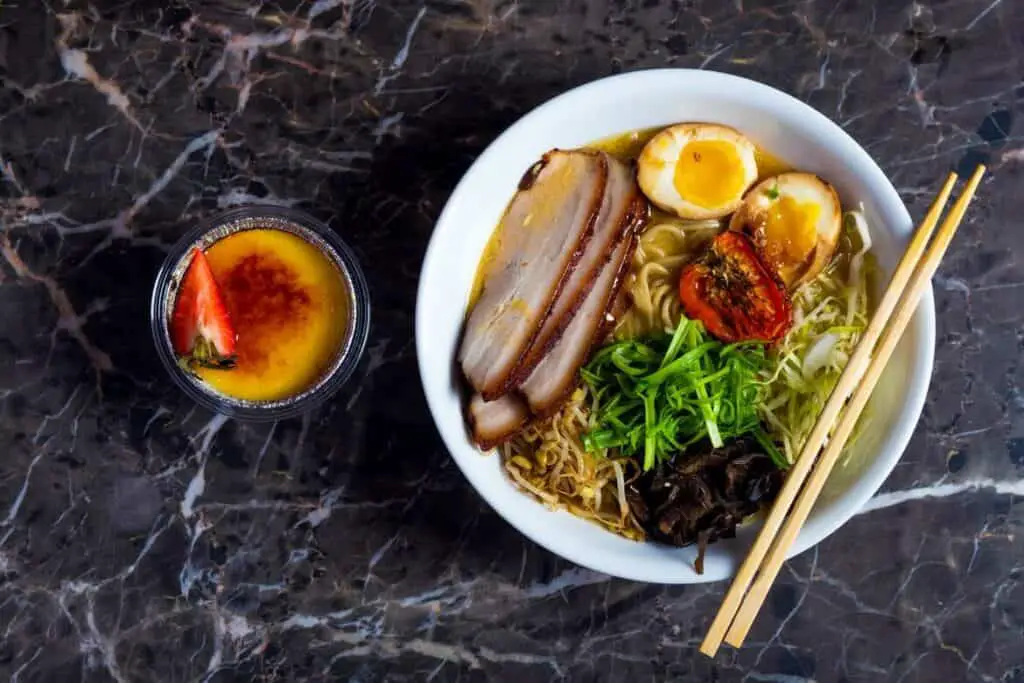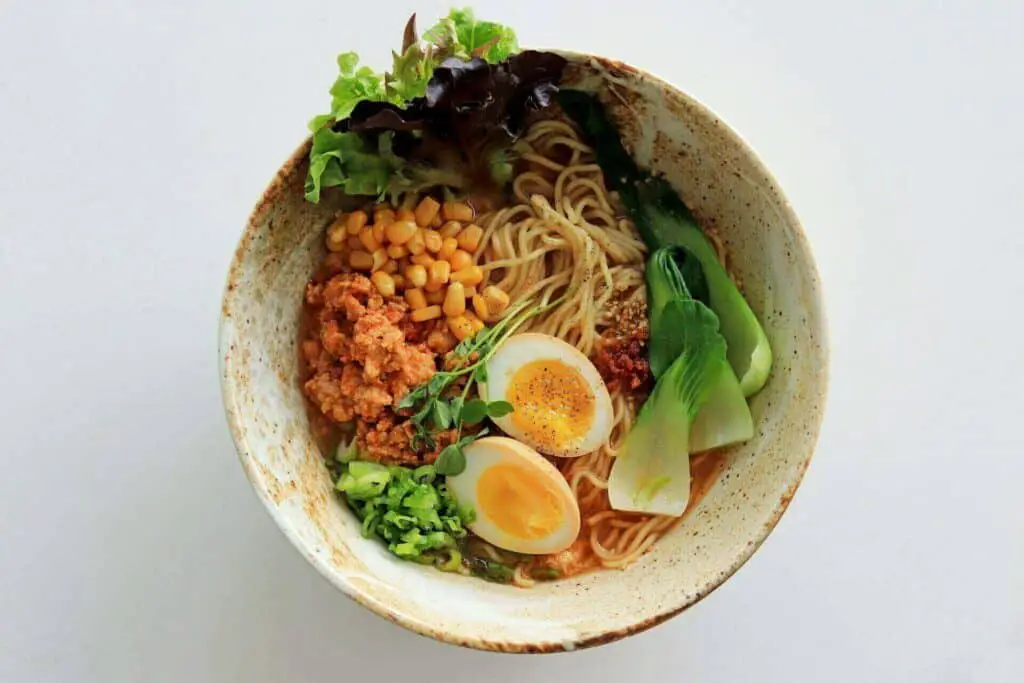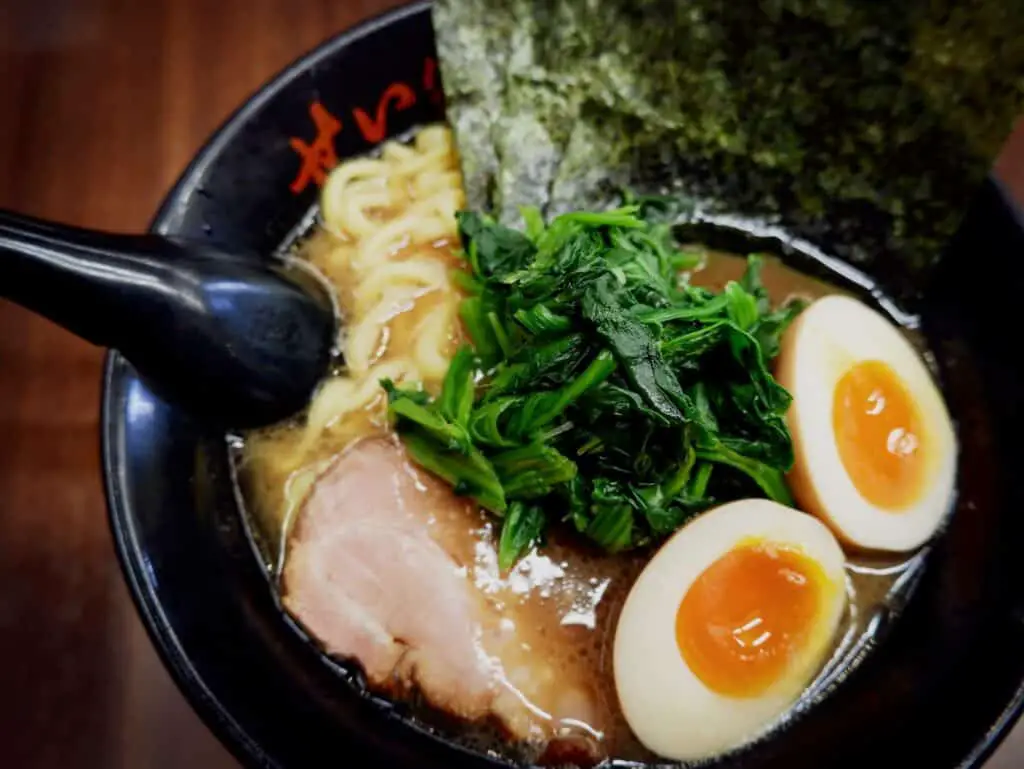The best way one can describe any appetizing and exquisite Japanese dish is with the word umami. The word denotes a core fifth taste that is explained as savory deliciousness that deepens the flavor. But can we use this word to describe ramen? Is ramen umami?
Yes, ramen is umami. The pleasant savory taste is mostly associated with broths, gravies, sauces, and ingredients that are high in amino acids, nucleotides, and glutamates. Ramen ticks all the boxes when it comes to umami flavor.


What Is Umami? Is Ramen Umami?
The core fifth taste is known as umami. Apart from sweet, salty, sour, and bitter tastes, scientists discovered umami taste receptors in 2002. It is an inherent taste every person can enjoy. Umami is the flavor of glutamate, which is an amino acid that is one of the key building blocks of proteins. Glutamate is present in the human body and in many tasty foods we consume every day. The umami flavor occurs when certain ingredients are fermented, aged, or cooked.

How Does Umami Taste?
The pleasant umami flavor tastes like delicious savoriness. Many describe the taste as earthy, smoky, or meaty. Even though it is generally difficult to explain what umami tastes like, the term is usually used to describe foods that are addicting and comforting, like broths, gravies, and sauces. Some foods have a natural umami taste, while some dishes can trigger the taste through the cooking process. The most common foods with umami taste are:
- Mushrooms,
- Tomatoes,
- Garlic
- Corn,
- Soybeans,
- Shrimp,
- Kimchi,
- Miso,
- Fatty meats (i.e., pork chops, bacon, steak),
- Fish sauce,
- Aged cheese,
- Anchovies.
What Makes Ramen Rich in Umami Flavors?
Ramen is the most popular comfort food. It is a tasty broth that is paired with different vegetables, meats, and noodles. Whether the ramen you prepare is rich in umami flavor depends mostly on the ingredients you include. One will get an overload of umami flavor when the broth is cooked with soy sauce, miso, bamboo shoots, shiitake mushrooms, carrots, pork chops, bacon, Kombu (delicious edible seaweed,) and garlic.

How to Prepare Umami Ramen?
It might take great skill and years to perfect a ramen recipe. However, it isn’t complex or difficult to cook ramen at home that is healthy, delicious, and rich in incredible umami flavor. All you have to do is add the ingredients that you love the most and cook a broth that will make all the flavors stand out.
Finally, the popular texture and quality of the dish will depend on the noodles you use. Soba, udon noodles, and somen are most commonly used. They have to contain alkaline water that will affect the texture of the noodle and bring out the umami flavor in the broth.
Here are the necessary steps to cooking a healthy and appetizing dish.
Start With the Broth
There are four main types of ramen broth: miso broth (sake lee and fermented soybean paste,) shoyu broth (soy sauce,) tonkotsu (pork bone,) and shio (salt). If you want to choose a broth with an overwhelming amount of umami, choose tonkotsu broth. However, it will take a long time to cook the pork bone properly. Another option is to choose miso, shoyu, and shio broth which can be prepared in less than 30 minutes.
Preparing the broth is quite simple. First, put the oil in a larger pot and heat it (medium heat is the best choice). Add ginger and garlic once the oil starts shimmering. Cook those two for a couple of minutes. Once the vegetables soften, add mirin and soy sauce and stir. Then, add the stock (you can choose beef, pork, or chicken stock) and cover the pot. Wait until the ramen stock boils. The next step is to remove the lid and let it simmer for five minutes. Finally, add salt and mushrooms before letting it simmer for 10 minutes.

Next, Add Topping and Seasoning
Once you have a rich broth packed with umami, it’s time to start adding seasoning and toppings. While the broth simmers on low heat, start adding:
- Menma – a fermented Japanese type of bamboo shoots,
- Roasted peanuts,
- Shiitake mushrooms or sliced arage kikurage mushrooms,
- Scallions,
- Baby spinach,
- Pork, chicken or beef to your ramen
Finally, Prepare Noodles
The last step is to insert the ramen noodles into the boiling water. Cook them for 2-3 minutes until they become soft. You can divide the noodles into two bowls and pour the broth with all the ingredients over the noodles. The dish will be complete once you add a boiled and marinated egg, fresh scallions, and some jalapenos if you want to make it a bit spicier. The meal is finished and ready for serving.

How to Add Umami Flavor to Other Dishes?
Apart from ramen, other recipes can be taken to the next level with the addition of umami. Cooking is a great way to make certain dishes memorable. Here is what you can do with some meals.
| Dish | What to do |
| Pasta dish | Sprinkle a bit of Parmesan cheese |
| Ground beef | Add a squirt of ketchup or spread some tomato sauce |
| Pizza sauce | Blend one anchovy into the sauce |
| Chicken | Splash some soy sauce as the meat sears |
| Mayonnaise or aioli | A splash of fish sauce will bring out the tasty flavor |
Enrich Your Ramen With Umami Flavor With the Right Ingredients
The selection of certain ingredients such as mushrooms, soy sauce, pork meat, bamboo shoots, miso, and carrots will add an incredible taste to every ramen. The well-known meaty, earthy, and addictive taste will make a pleasant dish that a lot of people would turn to as a quick and healthy snack. But, if you want to upgrade other recipes, it is possible with just a bit of soy sauce, miso and sauce. Discover your favorite umami ingredients and embellish your food with an incredible taste.
